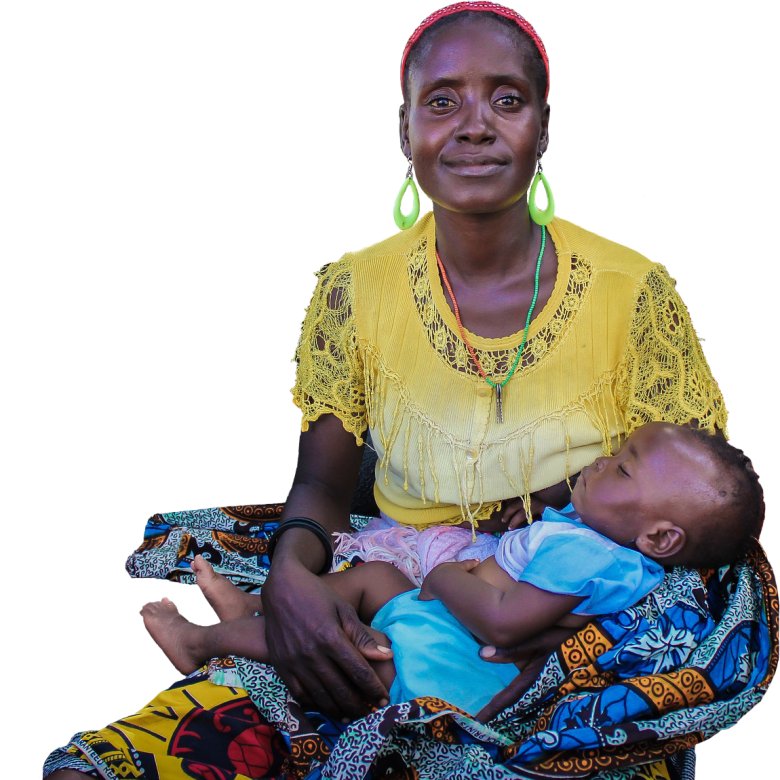Burden of a 'universal' healthcare system: The story of a common man from Sri Lanka

Universal Health Coverage is considered to be a human right but many people are not fortunate enough to enjoy this right due to various reasons. Sri Lanka is renowned for its free health policy which covers all citizens. Even though the system itself has several drawbacks, Sri Lanka has gained international recognition for near universal health coverage. Pavani Senarathne was the winner of the Student Essay Prize 2021 competition for this essay on the theme of 'universal healthcare'.
Introduction
Even in present times, thousands of mothers and infants die in childbirth due to lack of medical intervention, thousands of people die at homes or on the roads because they do not have access to free medical services and millions of children drop out of school due to family’s struggle to settle medical bills. These are a few common problems faced by citizens who live in countries that do not offer universal health coverage to their citizens. The number of countries that have achieved the goal of universal healthcare is limited. Emphasizing the importance of universal health coverage as a human right, Dr. Tedros Adhanom Ghebreyesus, the Director-General of the World Health Organization (WHO) has stated that “achieving it will be a one of top priorities of the World Health Organization” (Ghebreyesus, 2017). Goal 3.8 of the Sustainable Development Goals (SDG) adopted by the United Nations General Assembly in 2015, is achieving universal health coverage by 2030 (Voituriez et al., 2017). This emphasizes the significance of having minimum essential health services to reduce the disease burden on the general public.
Near Universal Care Health Coverage in Sri Lanka
Sri Lanka has a much-admired, publicly-financed and delivered free healthcare system. This “free health policy” was adopted in 1950 (Kumar, 2019). The basic infrastructure of health institutions, statetrained midwives for villages and trained nurses were established in 1927 and their services were expanded (Bjorkman, 2017). Sri Lanka’s free health system is based on the state administered health care facilities available free of charge and financing of the system is based on the taxpayer money (Kumar, 2019). The most remarkable aspect of Sri Lankan health policy is that anyone can walk into the Out-Patient Department of a government funded hospital and receive the medical care needed without any charges; there is no limitation on the amount of money spent on one person.
On the road to achieving SDG goal no 3, Sri Lanka is a model country which has achieved significant improvement in maternal and child health, and control and prevention of infectious diseases over the last 50 years only with an annual allocation of 1.6% of the GDP from the government for the health sector (Lanka et al., 2018). Sri Lanka is ranked among countries with the highest life expectancy in the South Asian region and has achieved significant accomplishments in reducing maternal and child mortality. Sri Lanka has an excellent performance in the national immunization programme by achieving high immunization coverage and disease control in the country such as eradication of poliomyelitis and elimination of neonatal tetanus, diphtheria, measles and rubella (Lanka et al., 2018). However, most of the Sri Lankans prefer to bypass the regional and provincial hospitals and go to District General and National Hospitals to obtain advanced treatments because regional hospitals are not sufficiently equipped to do so. Specialized care units such as oncology treatments, neurological disorders and cardiovascular diseases are limited to hospitals in the more developed and highly residential areas. People from rural villages have to travel great distances to receive the treatment they need. Most of these patients need high-end laboratory testing, expensive drugs and services from trained personnel. In the case of a patient without any privileges or means of out of pocket spending, that person has to suffer for a long time until their turn arises on the waiting list (Lanka et al., 2018).
Due to the free education system in Sri Lanka, there is no shortage of physicians; however, most of these physicians and health sector personnel prefer stay and work in developed residential areas causing a shortage of skilled personnel in hospitals in rural areas. In contrast to government hospital services, private hospitals are profit oriented businesses where a patient has to pay a fee for every service obtained. Most of the private in-patient care hospitals are also established in highly residential areas. An interesting fact is that most of the doctors in private hospitals are working there as part-time doctors after completing their shifts in government hospitals. While the government sector hospitals in the country provide the same expertise medical care as private hospitals, the difference lies in the comfort and convenience that private hospitals offer to the patient. A recent study shows that people tend to choose private sector treatment when their family income is increased (Kumar, 2019) (Pallegedara and Grimm, 2017).
Meanwhile, Chronic Kidney Disease (CKD) is a threat that affects approximately 10% of the global population. The two most common causes of CKD are diabetes and high blood pressure. Sri Lanka is a country with rapidly increasing CKD cases. Since the late 90’s, Sri Lanka is facing another serious health problem which has been identified as the Chronic Kidney Disease with unknown etiology because of the unknown origin of the disease. (Webster et al., 2017) (Chandrajith et al., 2011). As a result, the number of CKDu patients increased at an alarming rate and this has caused a problem in distributing resources because of the higher number of patients needing critical care.
The Case Study
One does not need to search far and wide to find an appropriate case study that can be used to portray the realities of the health coverage system in Sri Lanka. In this case, I found one in my own home, my father's life experiences as a CKD patient with several underlying medical conditions is a fitting example of what it is to be a common man using the "universal" healthcare system in Sri Lanka.
My father is a 70-year old South Asian male retired from government service. He has been taking oral medications for diabetes, high blood pressure and a cardiovascular disease since 2009. In 2016, he was diagnosed as a CKD patient with high serum creatinine levels. At present, he has been diagnosed as a CKD level 4 patient who might need a dialysis process in future. He is in need of the Erythropoietin hormone injection once a week and regular oral medication.
To collect essential medications and to consult a nephrologist at the nearest government nephrology unit, he has to travel nearly 40km to the Kandy General Hospital, which will take approximately 3 hours by public transport. Due to limited resources and the high number of CKD and CKDu patients, the only way to get an appointment with a consultant at the hospital is to join the queue of patients by at least 6.30 a.m. to get a ticket, join another queue for the blood tests, and then meet the consultant. This process requires a minimum of six hours. Collecting medication for the doctor's prescription also requires hours spent waiting in queues.
As a middle class citizen receiving a small government pension, he chooses to meet consultants in a private hospital and to obtain medicine necessary for all his medical conditions by spending out of pocket. Although the financial burden of medication and consultancy fees consumes a considerable portion of the government pension, it is a better option for an elderly patient with several medical conditions. Managing all of the above in a government hospital without the support of another person would be nearly impossible for a person in his condition. Therefore, if he chose to go to the government hospital, the family member who would be accompanying him will also have to spend an entire day at the hospital every month to help him. Thus, the burden is not limited to finances of the patient; it extends to other members of the family as well. With the Covid-19 pandemic, this burden has doubled and tripled as a result of cancelled public transportation services during lockdowns, shortage of medications and limited access to online health services.
Future of Universal Health Coverage in Sri Lanka
The award-winning near universal health coverage in Sri Lanka is changing at a rapid pace currently. The number of patients diagnosed with non-communicable diseases (NCDs) has increased drastically, but up to now, the response of the government to NCDs has been limited to establishing model Healthy Lifestyle Centers in a few districts with a plan to increase the number of districts covered gradually. There is no strategic plan to increase awareness regarding NCDs, to make treatment plans available, or to provide coverage to patients with NCDs at a lower cost. This clearly shows that the Sri Lankan health system is not prepared to supply necessary healthcare needed by the public in the near future (Chapman and Dharmaratne, 2019). Therefore, the system needs be responsive to emerging trends and make necessary interventions in a timely manner.
On the other hand, a robust healthcare system should be attuned to ground realities and make appropriate investments where necessary. Budgetary allocations for developing regional health infrastructure, purchasing of medical equipment and drugs as well as improving laboratory testing at regional hospitals is insufficient. By improving the services provided by divisional hospitals, the burden on the General hospitals can be lessened and it will be possible to save more lives.
Once the Director General of World Health Organization Dr. Tedros Adhanom mentioned that “the road to universal health coverage must include women as key partners and decision makers.” As a young woman in the field of science in a developing country, this essay comprises of my personal experiences and my analytical take on the universal health coverage in Sri Lanka. Despite gaining international recognition and praise, the Sri Lankan healthcare system has several underdeveloped areas which require immediate attention. Unless policy makers embrace new thinking and strategize for future with a vision to improving shortcomings of the system and adapting to new challenges, the hard earned accomplishment of near universal health coverage may slip through the cracks of our fingers.
References:
1. Background, P. (2016) ‘Policy on Healthcare Delivery for Universal Health Coverage’, pp. 1–10.
2. Bjorkman, J. W. (2017) ‘Health Policy and Politics in Sri Lanka : Developments in the South Asian Welfare State Author ( s ): James Warner Björkman Published by:University of California Press Stable URL : http://www.jstor.org/stable/2644406 REFERENCES Linked references are ava’, 25(5), pp. 537–552.
3. Chandrajith, R. et al. (2011) ‘Chronic kidney diseases of uncertain etiology (CKDue) in Sri Lanka: Geographic distribution and environmental implications’, Environmental Geochemistry and Health, 33(3), pp. 267–278. doi: 10.1007/s10653-010-9339-1.
4. Chapman, A. R. and Dharmaratne, S. D. (2019) ‘Sri Lanka and the possibilities of achieving universal health coverage in a poor country’, Global Public Health, 14(2), pp.271–283. doi: 10.1080/17441692.2018.1501080.
5. Ghebreyesus, T. A. (2017) ‘All roads lead to universal health coverage’, The Lancet Global Health, 5(9), pp. e839–e840. doi: 10.1016/S2214-109X(17)30295-4.
6. Kumar, R. (2019) ‘Public – private partnerships for universal health coverage ? The future of “ free health ” in Sri Lanka’, Globalization and Health, 15(Suppl 1), pp. 1–10. doi: 10.1186/s12992-019-0522-6.
7. Lanka, S. et al. (2018) ‘UNIVERSAL HEALTH COVERAGE STUDY SERIES NO . 38’, (38). Burden of a "universal" healthcare system: The story of a common man from Sri Lanka by K.M.Pavani Senarathne
8. Pallegedara, A. and Grimm, M. (2017) ‘Demand for private healthcare in a universal public healthcare system: Empirical evidence from Sri Lanka’, Health Policy and Planning, 32(9), pp. 1267–1284. doi: 10.1093/heapol/czx085.
9. Voituriez, T. et al. (2017) ‘Financing the 2030 agenda for sustainable development’, Governing Through Goals: Sustainable Development Goals as Governance Innovation, 16301(October), pp. 259–273. doi: 10.1057/978-1-137-45443-0_24.
10. Webster, A. C. et al. (2017) ‘Chronic Kidney Disease’, The Lancet, 389(10075), pp. 1238–1252. doi: 10.1016/S0140-6736(16)32064-5.
This article was published in International Health in November 2021. Read it here.
